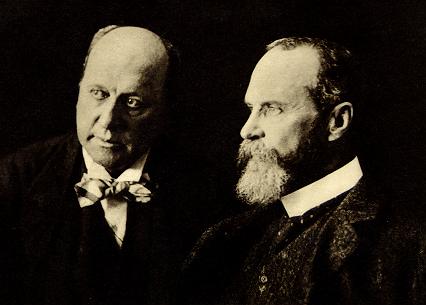"Felix Salmon
is summer arriving?
Credit cards: An exchange
I got a very smart email from Zoltan, one of my readers, yesterday, on the subject of credit cards:
In the recent past, I worked as a management consultant for some major credit card issuers. I can tell you that internally, these companies have a common term for customers who pay off their entire balance every month: “freeloaders”.
These “freeloaders” aren’t necessarily unprofitable; some are, most aren’t, on average the group is mildly profitable, but not nearly as profitable as those who carry a balance. If you’re wondering how a “freeloading” customer can be unprofitable, there are several factors. For one, about 0.8% of the 2%-3% interchange fee goes to rewards, but a diligent customer can push that to 1.5% or more by optimizing the collection and redemption of rewards points. Beyond that, the credit card issuer finances everything the “freeloader” buys on the card for 15 to 45 days. Finally, there are the various expenses a customer costs: printing and mailing cards and statements, call center service, various card benefits, etc.
The result is that roughly 20% of a credit card issuer’s customers are unprofitable (this can vary tremendously, depending on the company and calculation – for instance, allocation of fixed costs). This isn’t particularly remarkable, I suspect the number might be similar for Safeway or Best Buy. But this legislation is going to increase that percentage, by either increasing the number of unprofitable customers (the numerator) or decreasing the total number of customers (the denominator).
The legislation changes credit card economics fundamentally, making it less profitable. The issuers will try to restore some of the lost revenue by playing with their pricing, rewards, and servicing. A pricing structure built on a revenue model of 30% fees, 40% interest, and 30% interchange, will have to change when the revenue model is shifted overnight to 25% fees, 35% interest, and 40% interchange (these numbers are just theoretical examples).
One company may just raise the basic interest rate. Others might raise annual fees or reduce rewards. Many will do a combination of things. But the point is that some companies will make changes that will definitely disadvantage customers who don’t carry a balance (i.e., “freeloaders”), while other changes will be neutral. Eventually the issuers will settle at a competitive equilibrium or develop their respective niches. However, as someone who knows how these decisions are made, I can’t think of any fruitful changes they could make that would improve things for “freeloaders”. So on average “freeloaders” will lose out. Will they lose out as badly as the industry implies? No way, but they will still lose out.
I responded:
I guess where I don’t follow you is where you talk about when “the issuers will try to restore some of the lost revenue” — aren’t they trying to maximize their revenue already? Aren’t they basically trying to maximize the profitability of the freeloaders in the face of known competition?
The analogy I have in mind is health care reform, where people ask how the health insurers will be able to make as much money as they do today — the answer is that they won’t. And the same with credit cards — why can’t they simply become less profitable, like, I dunno, video rental stores?
It strikes me that if freeloaders, as a group, are profitable right now, then at least some credit card companies will be content to continue to make money off them as they do right now. And if other credit card companies start raising fees etc, those customers will just defect to those companies which don’t, no?
And I got this back from Zoltan:
Yeah, that “restore lost revenue” part wasn’t as clear as it could have been. What I meant is that the current pricing and service structure has been optimized (or ostensibly optimized) for a certain type and level of revenue. Once that revenue changes, they will reconfigure things to maximize profitability under the new conditions. The profit-maximizing pricing structure of January 2009 won’t be the same in July 2009. I can’t conceive of any way that the new profit-maximizing pricing structure will have lower prices for anything. I can’t say it’s impossible, but I don’t see it.
I think health care is a great example. Of course, insurers will make less money if there is health reform. But they will also change the structure of their plans (beyond merely what’s required by legislation) to adjust to the new reality. Certain types of policies or benefits will become less profitable, even unprofitable, and be phased out. Others will be more profitable and be pushed. Many (mostly well off) people will be worse off than they are now, in that they’ll have to pay more (through premiums or taxes), or have less benefits. The idea that some have that the entire cost can be borne by the insurers is a fantasy. Even if it weren’t, the idea that everyone will be better of, as opposed to, say, 80% being better off and 20% being worse off, is also wrong. (I’m Canadian, so I don’t really have skin in the U.S. health care game, although I think the U.S. status quo maximizes our sizable free rider benefits).
There are tradeoffs for everything. If hotels were banned from charging $8 for a minibar beer and $2/minute for phone calls and $25 for breakfast, the hotel chains would have to reevaluate their pricing structure. The result would probably be higher room rates and some closed hotels. If airlines had a price limit put on their business class seats, you can bet coach tickets would go up in price and the number of flights would go down.
In these cases and in the case of credit cards, there is tremendous profitability in one customer segment that, to an extent, essentially subsidizes another segment because it is willing to pay ridiculous prices. The difference is that with airlines and hotels, the people paying the ridiculous prices are corporations and rich people, while in credit cards, it’s the stupid and the poor. That may argue in favour of the legislation.
Even if you don’t buy my arguments, it’s pretty clear that the industry will have less revenue per customer, and higher fixed costs per customer (due to the allocation of fixed costs among fewer customers). Economically speaking, this will cause the supply curve for credit cards to shift leftward, increasing price.
You’re definitely correct that the new equilibrium is card issuers making less money. But that isn’t necessarily a good thing for those (like me) who are currently maximizing the benefits and minimizing the costs of our cards. That said, I think the overall effect on “freeloaders” will probably be minor, maybe a few dollars a year in extra fees, maybe a small depreciation in rewards schemes. I think the bulk of the loss will be shared by the credit card companies and by those who continue to carry a balance, in the form of increased interest rates and increases in whatever fees can still be increased and assessed.
Your last paragraph about issuers trying to keep making money off freeloaders is essentially correct. American Express’ charge card (as opposed to credit card) business, for example, is made up entirely of freeloaders, and is very profitable. But they are an exception. Most companies can’t cordon off their freeloaders and charge them a specific pricing structure that makes them profitable (although they do try). They’re often stuck in the same ABC Bank Gold Rewards card as the people who carry a balance. So if they change the pricing for that card, everyone gets hit.
As for your point about “freeloaders” defecting from companies that raise fees, that will definitely occur, but I still believe the eventual equilibrium will be higher pricing.
This is pretty convincing stuff. Yes, those of us who pay our credit-card bills off in full each month might be worse off as a result of this legislation, but probably only by a few dollars a year. On the other hand, all of us will be better off in that we will no longer run the risk, however small, of being egregiously shafted by the credit-card companies.
Think of the credit card legislation as an insurance premium: it might cost a few bucks a year, but it might end up saving you a huge amount of money and hassle. Meanwhile, it’ll certainly help out millions of cardholders who are less assiduous in paying their cards off in full each month. So net-net, the new regulations are a very good thing — unless you, like John Hempton, think that it’s a great public good that banks make enormous profits each year.
Update: Another reader adds:
I have worked for five years in the credit card industry for two major issuers, actually running and developing the financial models (NPV etc) on which the decisions were made to solicit and approve consumers. I am now in b-school, but can shed some light on the consequences of this legislation, in light of your below article. In my five years in the two companies, I have been intimately involved in decisions to lend more than $100B to US consumers through credit card. So, I am talking form reality here, not conjectures.
Credit card industry works on a bar-bell business model. All the profits (mainly through fees and very very high interest stretching into 30% or more) are made form people below 650 FICO, all the assets (loans or balances) are from people from above 700 FICO. The industry is just a giant wealth transfer mechanism from poor people to wealthly people. The profits from below (subprime) serve to subsidize the interest rate and rewards cost of people in the ’super prime’ category. You can bet that that will disappear soon. The discussion about ‘transactors’ (thats the industry term, not freeloaders) is a side distraction, not relevant at all. At best, transactors are mildly profitable, at worst they breakeven. The interchange rate is 1.87%, not 2 or 3%.
The subprime people need to be saved from themselves, no doubt about that. I couldn’t myself stomach the usurious 35% interest rate charged on them by my companies on a $500 credit line, in addition to the varying forms of fees, while a superprime customer had a $30K line at 5% interest rate.
I ran multiple simulations last fall in my previous company on behalf of the CFO in anticipation of these new laws and I can tell you that we were deeply unprofitable in every scenario. Considering my knowledge of the business model of other card issuers, I wouldn’t be surprised if they are in the same position too.
Welcome to the new age of credit cards, when they will actually be used as a convenience service, rather than as an ATM. This can only be a good thing."
“The result is that roughly 20% of a credit card issuer’s customers are unprofitable (this can vary tremendously, depending on the company and calculation – for instance, allocation of fixed costs). This isn’t particularly remarkable, I suspect the number might be similar for Safeway or Best Buy”
There’s something about this business model that strikes me as peculiar. Shouldn’t there be a credit card company that attempts to lower fees for the “profitable people”, and hence siphon off the subsidizers. Isn’t that what people claim happens with health care? I’m reading in these comments that the subsidizers/profitable CC users are held hostage, allowing the CC companies to make money off of unprofitable people. Maybe I missed something.
- Posted by Don the libertarian Democrat "






































No comments:
Post a Comment